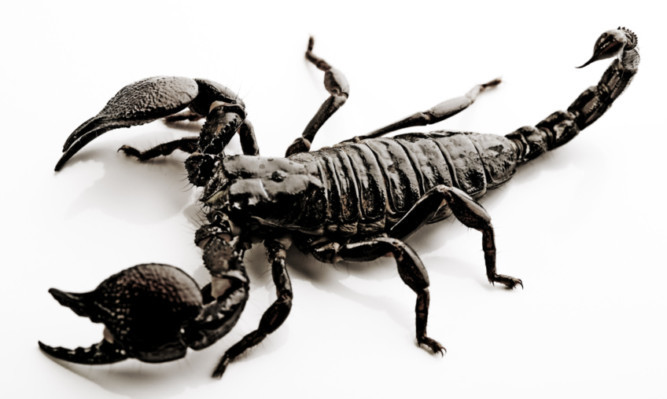Potentially deadly scorpions once roamed the land around the Tay.
The revelation has come following the exciting discovery in Perth of a fossil dating back 400 million years.
It is understood Scotland was part of a large continent at this time and located south of the equator.
The find said to be the first of its kind in Scotland was made at Friarton Quarry.
Rosalind Garton, tutor with the Open Association at St Andrews University, was leading a geologists’ trip there.
She spotted some unusual pit marks preserved in the rocks. The pits represent the individual claw marks left by a scorpion-like animal as it walked over wet mud, and a central groove is the drag mark made by the animal’s tail.
The trace fossil is known by the Latin name Palaeohelcura tridactyla.
The rock in which it was found is 400-million-year-old sediment sandwiched between layers of volcanic rock.
Ms Garton said the rock was once mud on the shore of a lake or river that existed between periods of volcanic eruptions. Her husband, Richard Batchelor, honorary research fellow in the department of earth and environmental sciences at St Andrews University, helped her research the fossil.
Ms Garton said: “This is the first record in Scotland of this trace fossil and it is an important clue to the kind of animals that were once living here.”
The discovery has been placed alongside other fossils, including a dinosaur’s footprint from Perth Museum’s collection, and is on display at Strathearn Community Library, Crieff, until March 16.
